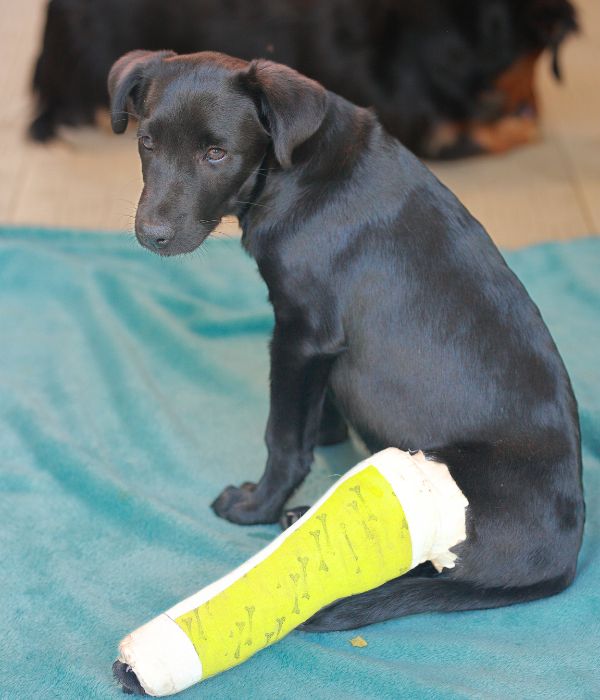Pet TPLO Surgery for Cruciate Ligament Rupture in Glenwood, MD
Cranial cruciate ligament (CrCL) rupture is one of the most common orthopedic conditions affecting dogs. It can lead to lameness, pain, and the risk of arthritis. At Animal Medical Hospital at Glenwood, we specialize in treating this condition through Tibial Plateau Leveling Osteotomy (TPLO) surgery. This advanced procedure helps restore stability to the knee joint, improving mobility and quality of life for affected pets.
What Is TPLO Surgery?
Tibial Plateau Leveling Osteotomy (TPLO) surgery is a proven treatment for dogs with a cranial cruciate ligament rupture. The CrCL, equivalent to the anterior cruciate ligament (ACL) in humans, plays a crucial role in stabilizing the knee joint. When this ligament ruptures, the joint becomes unstable, causing discomfort and impaired mobility.
During TPLO surgery, the tibial plateau (the top of the shin bone) is reshaped and stabilized using a plate and screws. By altering the tibial angle, the knee joint becomes stable during weight-bearing, even without the CrCL being repaired directly. This stability allows dogs to regain confidence in their movement, reducing pain and minimizing the risk of long-term joint damage.

Diagnosing CrCL Rupture
Diagnosing a cranial cruciate ligament rupture typically involves a thorough physical examination, gait analysis, and diagnostic imaging. At Animal Medical Hospital at Glenwood, our veterinary team uses X-rays to:
- Confirm the presence of joint effusion (fluid accumulation in the joint)
- Assess the extent of arthritis
- Perform precise measurements for surgical planning
- Rule out other potential conditions affecting the joint
Partial CrCL tears can be more challenging to diagnose, but our expertise ensures that your pet receives an accurate assessment.
Is TPLO Surgery Right for Your Dog?
TPLO surgery is often recommended for dogs with persistent lameness and knee instability caused by a CrCL rupture. It is particularly beneficial for:
- Medium, large, and giant breed dogs
- Active dogs or those with bilateral (both knees) ligament ruptures
- Younger dogs whose mobility may be severely impacted without surgical intervention
Obesity and poor physical condition can increase the risk of CrCL injury. Pet owners can help by maintaining their dog’s weight through proper nutrition and regular exercise.
The TPLO Surgery Process
At Animal Medical Hospital at Glenwood, your pet’s comfort and safety are our priorities throughout the surgical journey. Here’s what to expect:
- Pre-Surgical Consultation: We begin with a thorough consultation to evaluate your pet’s condition and determine whether TPLO surgery is the best option. Our veterinary team will review diagnostic results, explain the procedure, and answer any questions you may have.
- The Procedure: During TPLO surgery, our experienced veterinarians carefully reshape the tibial plateau and secure it with specialized implants. This creates a stable joint that functions smoothly during movement.
- Post-Surgical Care: Your pet will receive detailed post-operative care instructions to support their recovery after surgery. This includes guidance on activity restrictions, physical therapy, and pain management. Regular follow-up appointments ensure your pet’s progress is monitored and any concerns are promptly addressed.
Why Choose Animal Medical Hospital at Glenwood?
At Animal Medical Hospital at Glenwood, our skilled veterinary team is dedicated to delivering exceptional care for pets in need of TPLO surgery. We combine expertise, advanced surgical techniques, and compassionate care to ensure the best possible outcomes for your furry companion.
From pre-surgical consultations to post-operative support, we are committed to guiding you through every step of the process. Your pet’s well-being is our priority, and we strive to make their journey to recovery as smooth and comfortable as possible.
